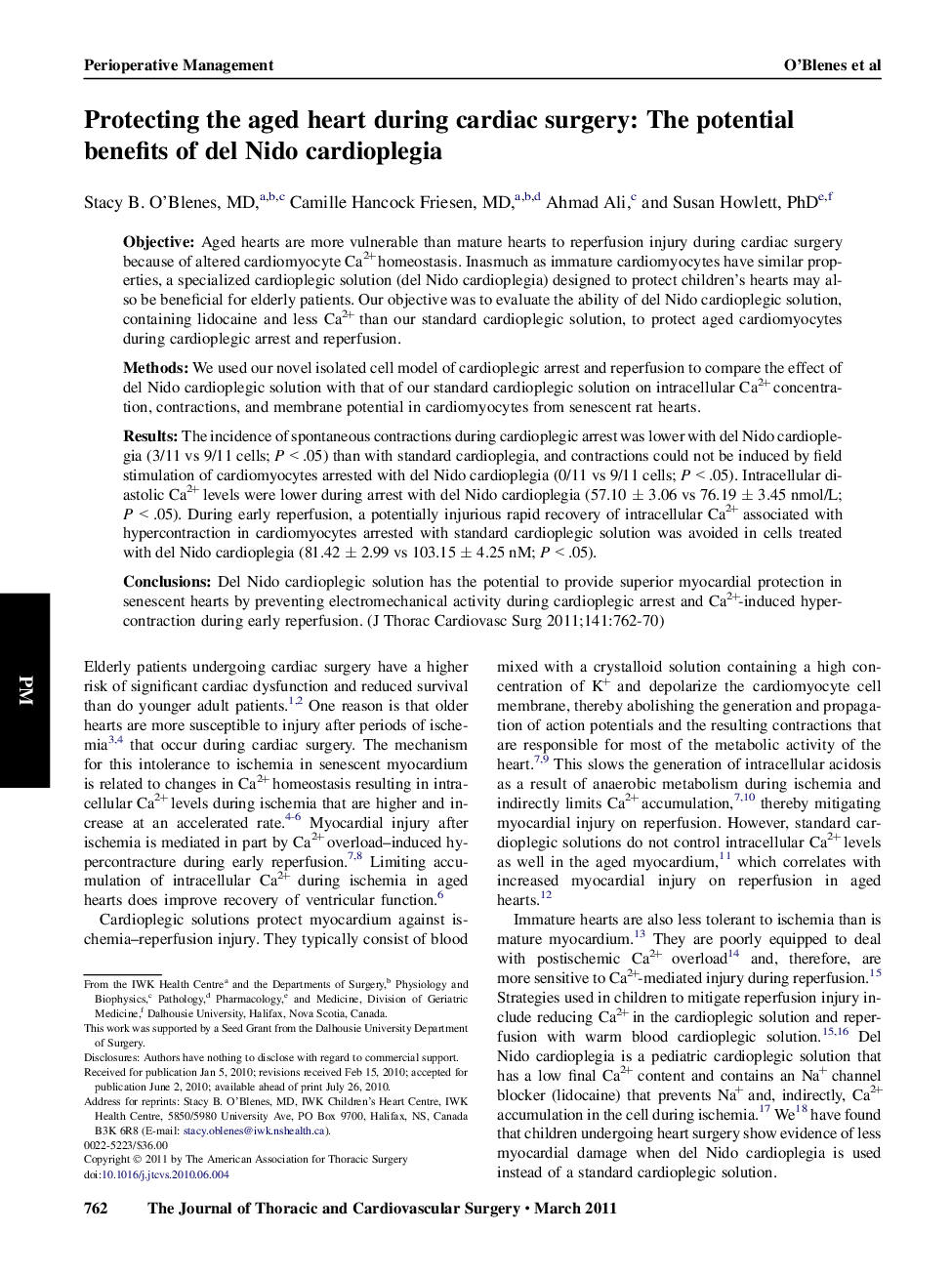| Article ID | Journal | Published Year | Pages | File Type |
|---|---|---|---|---|
| 2981630 | The Journal of Thoracic and Cardiovascular Surgery | 2011 | 9 Pages |
ObjectiveAged hearts are more vulnerable than mature hearts to reperfusion injury during cardiac surgery because of altered cardiomyocyte Ca2+ homeostasis. Inasmuch as immature cardiomyocytes have similar properties, a specialized cardioplegic solution (del Nido cardioplegia) designed to protect children’s hearts may also be beneficial for elderly patients. Our objective was to evaluate the ability of del Nido cardioplegic solution, containing lidocaine and less Ca2+ than our standard cardioplegic solution, to protect aged cardiomyocytes during cardioplegic arrest and reperfusion.MethodsWe used our novel isolated cell model of cardioplegic arrest and reperfusion to compare the effect of del Nido cardioplegic solution with that of our standard cardioplegic solution on intracellular Ca2+ concentration, contractions, and membrane potential in cardiomyocytes from senescent rat hearts.ResultsThe incidence of spontaneous contractions during cardioplegic arrest was lower with del Nido cardioplegia (3/11 vs 9/11 cells; P < .05) than with standard cardioplegia, and contractions could not be induced by field stimulation of cardiomyocytes arrested with del Nido cardioplegia (0/11 vs 9/11 cells; P < .05). Intracellular diastolic Ca2+ levels were lower during arrest with del Nido cardioplegia (57.10 ± 3.06 vs 76.19 ± 3.45 nmol/L; P < .05). During early reperfusion, a potentially injurious rapid recovery of intracellular Ca2+ associated with hypercontraction in cardiomyocytes arrested with standard cardioplegic solution was avoided in cells treated with del Nido cardioplegia (81.42 ± 2.99 vs 103.15 ± 4.25 nM; P < .05).ConclusionsDel Nido cardioplegic solution has the potential to provide superior myocardial protection in senescent hearts by preventing electromechanical activity during cardioplegic arrest and Ca2+-induced hypercontraction during early reperfusion.
